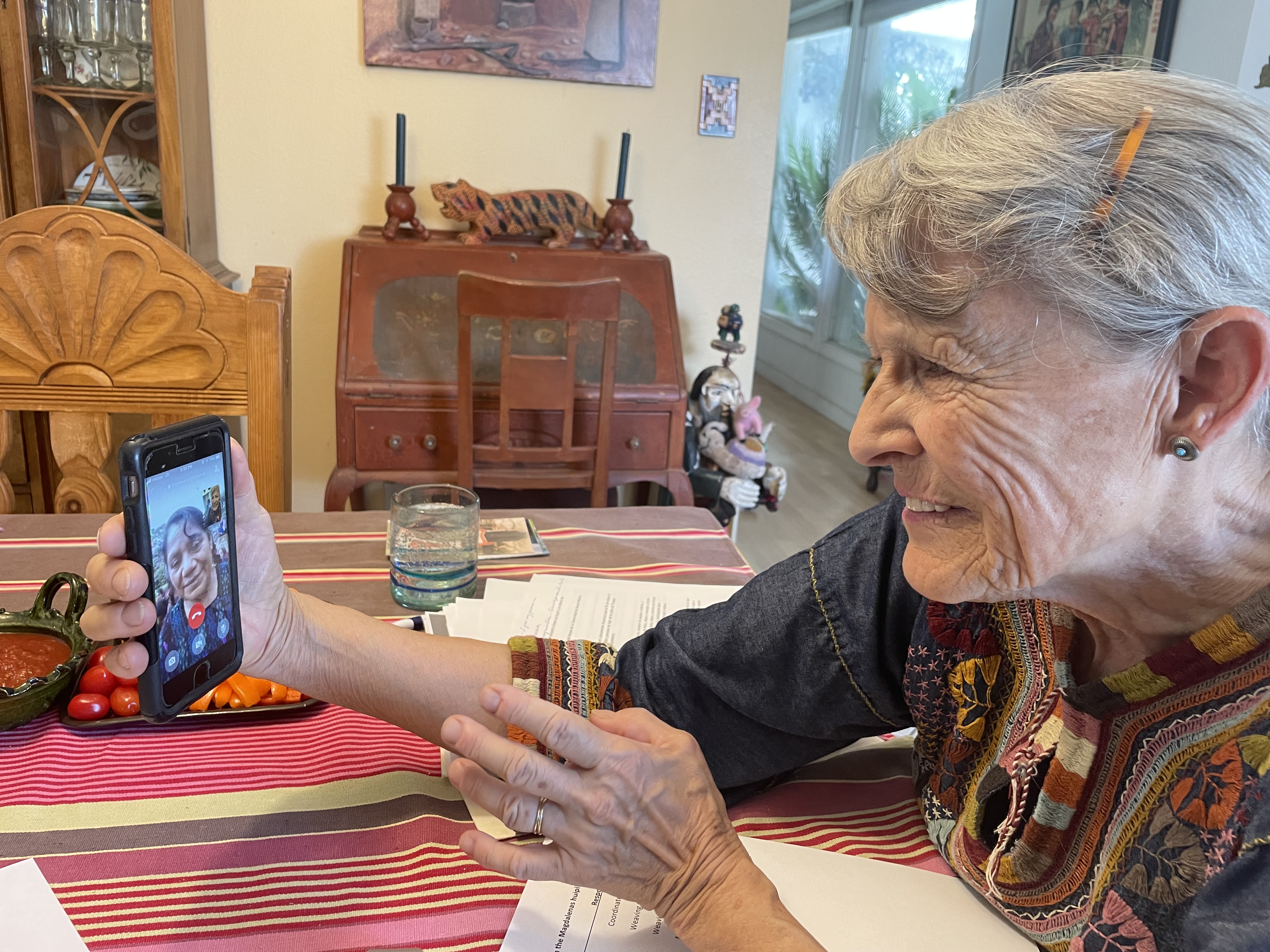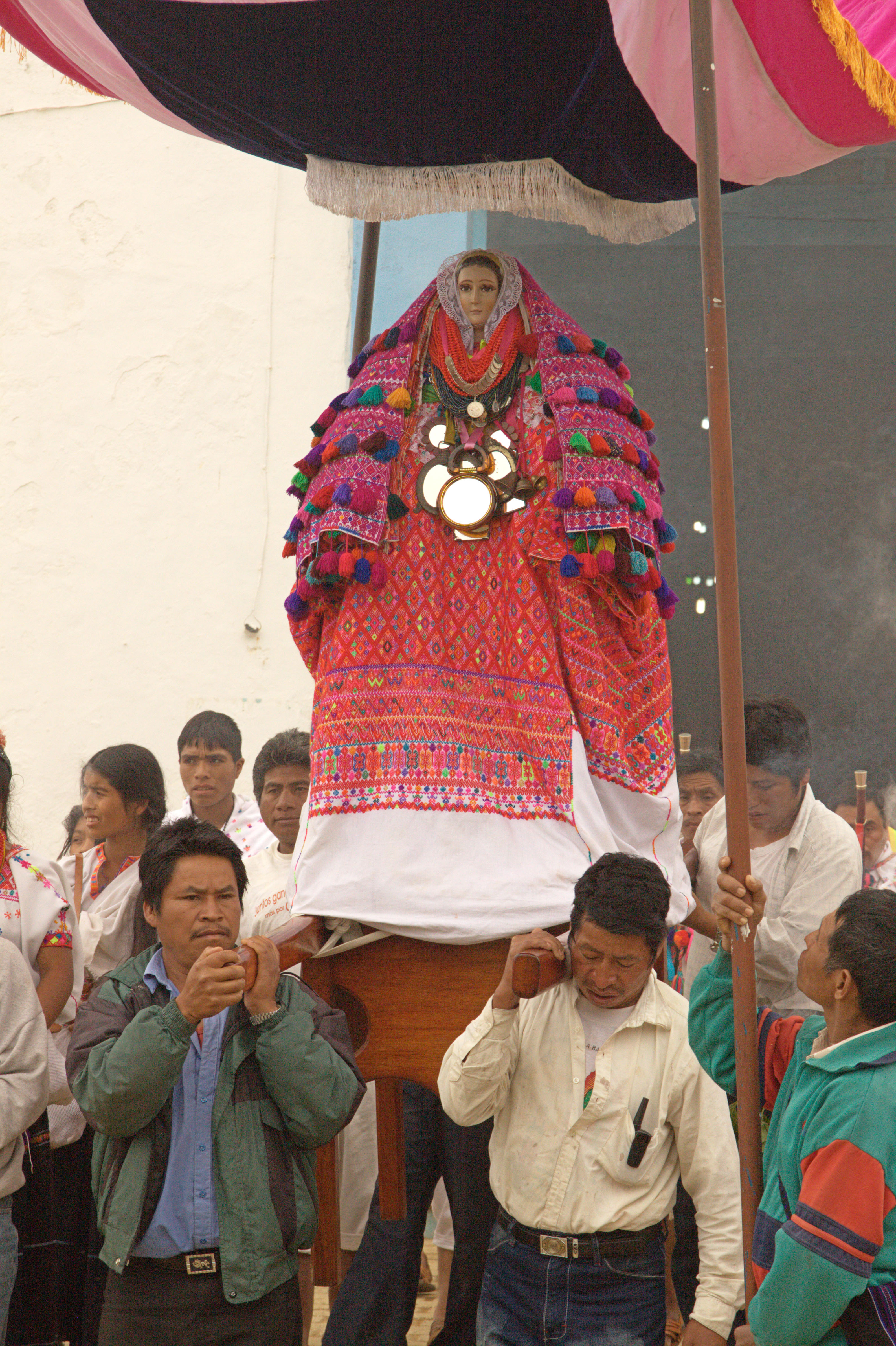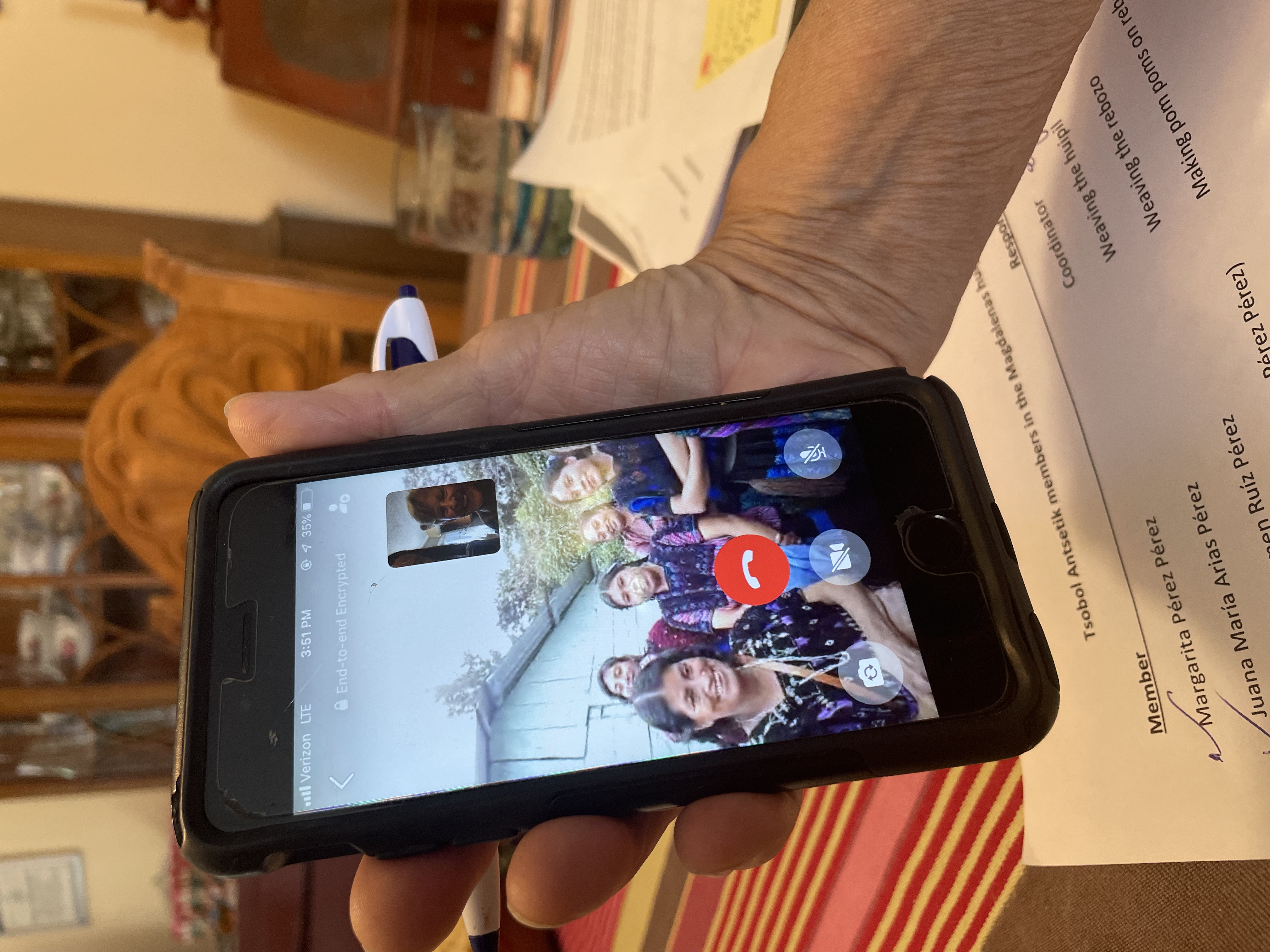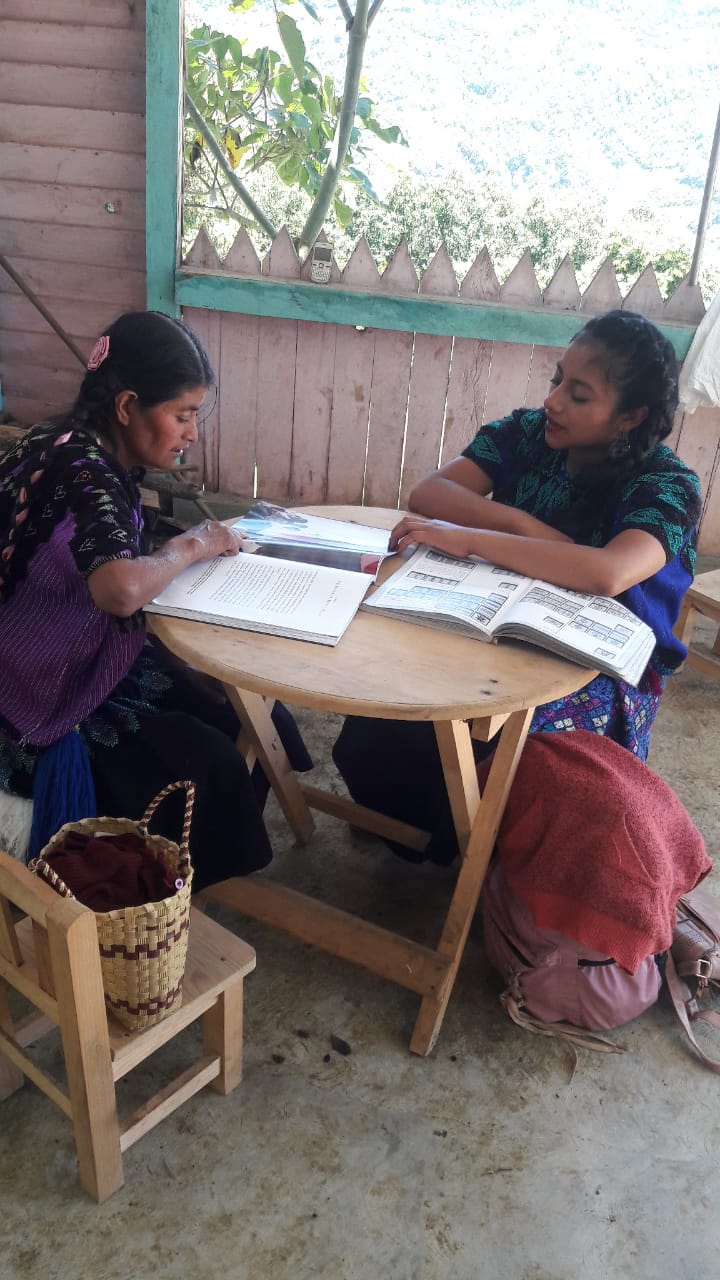Over the July 4th weekend, University Museum Curator Kristin Otto met with NMSU Professor Emerita Christine Eber and (thanks to the technology of WhatsApp video calls) with Tsotsil-Maya women from the weaving cooperative Tsobol Antsetik based in San Pedro Chenalhó, Chiapas, Mexico. The women of Tsobol Antsetik stood gathered around a phone outside their meeting house in Chixiltón, where they had just prayed to strengthen and support their group. Meanwhile, Christine and Kristin huddled around their phone in Christine’s home in Las Cruces. This virtual meeting—during which we all spoke to each other in a mixture of Spanish, Tsotsil, and English—marked the beginning of a months-long collaborative commission project coinciding with our 2021-2022 exhibition “When a Woman Rises: Maya Weavers Creating Connections Through Textiles.”

Collaborative exhibitions in the time of COVID-19. Christine Eber speaks over WhatsApp with Flor de Margarita Pérez Pérez, who will be helping to coordinate the commission project with Tsobol Antsetik.
Over the past year, Kristin has been working closely with Christine and the local organization Weaving for Justice to co-curate an exhibition of Maya textiles for the University Museum. The exhibition—entitled “When a Woman Rises: Maya Weavers Creating Connections Through Textiles”—will open along with the reopening of the museum on August 16th. The exhibition will show how Tsotsil-Maya women use weaving practices to strengthen local communities and forge global relationships. Early in the exhibition development process, Kristin and Christine discussed options for commissioning a new piece for the museum’s permanent collection that would speak to the main ideas of the exhibition, strengthen the museum’s collection, and support the artistry of the women of Tsobol Antsetik. Then we came across this photo…

Santa María Magdalena processed through the streets during her feast day in the township of Magdalenas Aldama, Chiapas, Mexico, 2010. © Janet Schwartz
In the late 1800s, Mary Magdalene—the patron saint of the township of Magdalenas Aldama—appeared to a Maya woman in a dream and asked her to make her a new huipil. Women in other townships had similar dreams and sought to create new clothing for their own saints. Weavers studied surviving older designs and traveled to other townships to learn from other ceremonial huipils. Weaving new clothing for patron saints led to the revival of traditional weaving practices and patterns in Chiapas, which had suffered under the cultural oppression of the colonial and postcolonial periods. Today, weaving a saint’s huipil is the pinnacle of artistic achievement, reserved only for those with certain personal qualities and great skill.
Inspired by the story of how clothing the saints led to both the revival and continued evolution of weaving traditions in Chiapas, we have commissioned a complete saint’s huipil ensemble, modeled after Santa María Magdalena's in the Magdalenas township. The ensemble embodies the ideals of women’s empowerment, collaborative relationship building, and artistry that we explore in our exhibition. Members of the Tsobol Antsetik cooperative will document the process of making the ensemble over the coming months. The entire project has been generously supported by Weaving for Justice, Kim Sorensen, and an anonymous donor.

Weavers gathered to discuss the project. From left to right: Juana María Arias Pérez, Luz Maribel Ruíz Pérez, Veronica Arias Pérez, Patricia Lopez Lopez, María del Carmen Ruíz Pérez.
At our first meeting, we went through the necessary procedures for research conducted through a university, including informed consent. All the women agreed to be publicly identified by both their names and faces for the project. We are grateful and honored for the all the women of Tsobol Antsetik who will contribute. We have briefly introduced them here, and we look forward to telling you more about them and their work as the commission project continues.
The entire ensemble will take at least six months to complete, so we will all be waiting a while to see it in person. However, we will share the photographs and videos from the weavers documenting the process of making the ensemble in a special section of the exhibition, as well as periodically on our blog and social media. Our next step will take place when Kristin travels to the Museum of International Folk Art in Santa Fe to take detailed photographs of an older saint’s huipil in their collection, which will help Juana María study the designs for the main huipil. Meanwhile in Chiapas, a group of women travelled today to San Cristóbal de las Casas to purchase supplies for the project. We are excited to take you along with us on this journey!

Juana María Arias Pérez (left) and Claudia Pérez Pérez (right, Tsobol Antsetik Cooperative Representative) studying a photograph of the saint's huipil ensemble as they plan to purchase necessary supplies.
Many thanks to Janet Schwartz and Carol Karasik who have provided essential help to facilitate the project at the University Museum and the weavers' work in Chiapas.